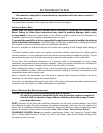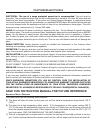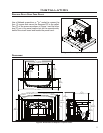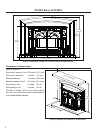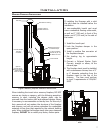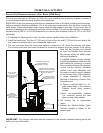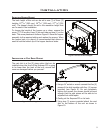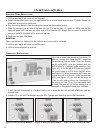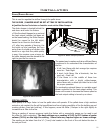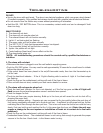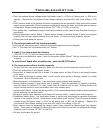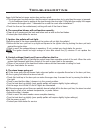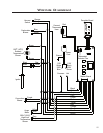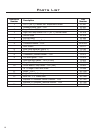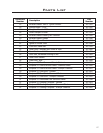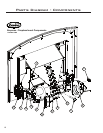
11
Installation
SLIDER/DAMPER SETTING:
This is used to regulate the airflow through the pellet stove.
THE SLIDER / DAMPER MUST BE SET AT TIME OF INSTALLATION.
A Qualified Service Technician or Installer must set the Slider Damper.
More Air
Less Air
Figure 15: Slider / damper positions.
The slider damper is located behind the
cast doors and under the firebox.
• If the fire should happen to go out and
the heat output indicator has been set
on the lowest setting, the Slider Damper
should be moved to the left slightl,
lessen the air flow into the firebox.
• If, after long periods of burning, the
fire builds up and overflows the burn
pot or there is a build up of clinkers, this
would be a sign that the pellet quality
is poor, this requires more primary air,
the slider damper must be moved to the
right to give the fire more air.
Figure 16: Efficient Flame.
The easiest way to make sure that an efficient flame
is achieved is to understand the characteristics of
the fire.
• A tall, lazy flame with dark orange tips requires
more air – Push Right
• A short, brisk flame, like a blowtorch, has too
much air – Push Left
• If the flame is in the middle of these two
characteristics with a bright yellow/orange,
active flame with no black tips then the air is set
for proper operation.
The combustion exhaust blower is a variable speed
blower controlled by the heat output setting. This
blower will increse or decrease the blower speed as
the heat output setting is turned up or down.
SPECIAL NOTES:
Pellet quality is a major factor in how the pellet stove will operate. If the pellets have a high moisture
content or ash content the fire will be less efficient and has a higher possibility of the fire building up and
creating clinkers (hard ash build-up). If this happens, move the Slider / Damper to the right slightly to
increase the air flow to the fire.
Taking a reading of vacuum pressure inside the firebox with a magnehelic gauge can be used to set
the slider for best combustion. The best settings are a reading of 0.12 to 0.13 inches of water
column (30 Pa) on the high fire setting. Some fuels may require higher or lower settings.
The reading can be taken from the ” (3 mm) hole located on the front of the unit below the door in
the ash pan front.



